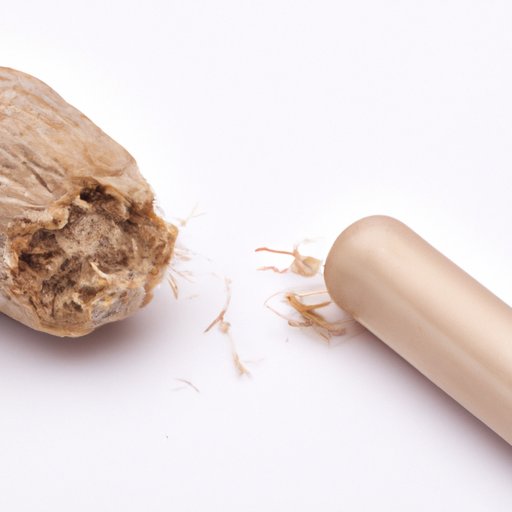
How to Treat Scabies: A Comprehensive Guide
Scabies is a highly contagious skin condition caused by mites that burrow into the skin. It spreads easily through close contact with an infected person or their belongings. Symptoms can include intense itching, rash, and sores. Although it can be a distressing condition, the good news is that it is treatable. In this article, we’ll provide a step-by-step guide to treating scabies, natural remedies, the science behind treatment, personal stories, prevention strategies, and psychological impacts.
Step-by-Step Guide to Treating Scabies
The most common approach to treating scabies is to use prescription creams, lotions, and oral medications. These treatments target the mites, their eggs and relieve the symptoms of the condition. To use these treatments most effectively, follow these steps:
1. Get a prescription from a doctor or dermatologist. Scabies treatments are not available over the counter as they contain powerful chemicals that require careful administration.
2. Follow the instructions provided by your doctor or on the package. Apply the cream or lotion over your entire body from the neck down. Leave it on for the suggested amount of time and then shower to remove it. Take oral medications as directed.
3. Wash all bedding, clothing, and towels in hot water and dry them in a hot dryer. Or, seal them in a plastic bag and leave them in the sun for several hours.
4. Disinfect any personal belongings that cannot be washed, such as furniture and reusable shopping bags. Use a solution of rubbing alcohol or bleach and water.
5. Repeat the treatment after at least a week or two, as prescribed by your doctor. This second round of treatment is essential as the first round may have missed some mites that have since hatched.
Natural Remedies for Scabies
Many people prefer to treat scabies with natural remedies or use these remedies alongside prescription treatments. While more research is needed to understand their effectiveness, essential oils such as tea tree oil and neem oil, as well as herbal remedies like aloe vera gel and turmeric, are said to help relieve symptoms and kill mites.
Pregnant women and young children may prefer to use gentler natural remedies, such as diluted lavender oil or neem powder paste. However, before using any natural remedy, it is important to discuss with a doctor or dermatologist.
The Science Behind Scabies Treatment
The mites that cause scabies burrow into the upper layer of the skin and lay eggs. The rash and intense itching are caused by an allergic reaction to the mites, their eggs, and their waste. Prescription treatments such as permethrin cream kill the mites and their eggs, while oral medications such as ivermectin kill the mites. Benzyl benzoate lotion is another treatment option that works in the same way as permethrin cream.
It is essential to follow the prescribed treatment schedule to ensure that the mites are eradicated fully. Prescribed treatments can cause side effects, and some people may prefer to use natural remedies. However, it is important to note that natural remedies may only relieve symptoms and not eliminate the mites from the body.
Personal Stories of Scabies Treatment
Many people have experienced the distress of a scabies infestation. The good news is that most people can make a full recovery with proper treatment. Some people opt for prescription treatments while others prefer natural remedies. Speak to a doctor or dermatologist before attempting any scabies treatment.
Personal stories of scabies treatment can provide insight and tips on what worked best for someone else. Turning to online support groups or forums can also be helpful when seeking advice on dealing with scabies or understanding other people’s experiences.
Prevention Strategies for Avoiding Scabies in the Future
Scabies is highly contagious and can be easily spread. Once someone in your household has scabies, it’s essential to take steps to prevent further infestation. Here are some tips:
1. Avoid close contact with people who have scabies or who have recently recovered from scabies until they have completed their treatment.
2. Do not share clothing or bedding with someone who has scabies.
3. Wash your bedding, towels, and clothing frequently in hot water and dry them in a hot dryer.
4. Disinfect all personal items and surfaces thoroughly. Use a solution of rubbing alcohol or bleach and water.
5. Familiarize yourself with the symptoms of scabies so that you can catch and treat it early if it arises again.
The Psychological Impact of Scabies and How to Cope
Scabies can have a considerable emotional impact on individuals. The itching and rash can cause discomfort and embarrassment, leading to feelings of anxiety, shame, and social isolation. It is essential to seek support from family and friends and reach out to professionals if these feelings persist. It may also help to talk to other individuals with similar experiences, such as online forum groups or support groups.
Conclusion
Scabies can be an uncomfortable and distressing condition, but with the right treatment and prevention measures, it is possible to make a full recovery. Prescription creams, lotions, and oral medications are the most common treatments, while natural remedies and gentler treatments may be preferred by others. Taking care of hygiene and cleaning practices and understanding the symptoms of scabies can help prevent re-infestation. Don’t hesitate to seek support from loved ones and professionals if you’re struggling with the emotional toll of scabies.




